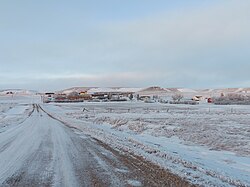Hanks | |
|---|---|
 Hanks, North Dakota | |
| Coordinates: 48°36′12″N103°48′11″W / 48.60333°N 103.80306°W | |
| Country | United States |
| State | North Dakota |
| County | Williams |
| Elevation | 2,116 ft (645 m) |
| Time zone | UTC-6 (Central (CST)) |
| • Summer (DST) | UTC-5 (CDT) |
| Area code | 701 |
| GNIS feature ID | 1029297 [1] |
Hanks is an unincorporated community in Williams County, North Dakota, United States.


